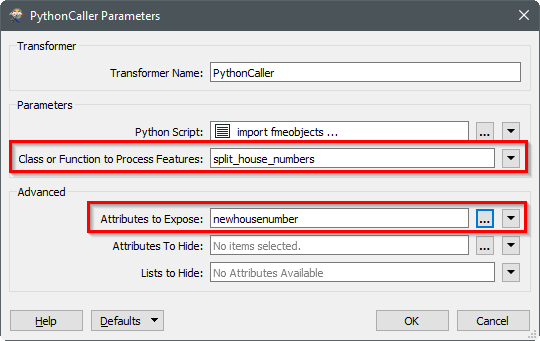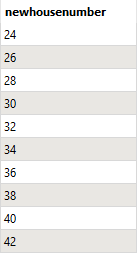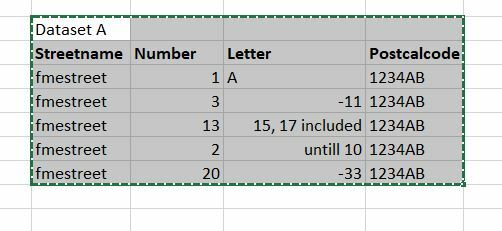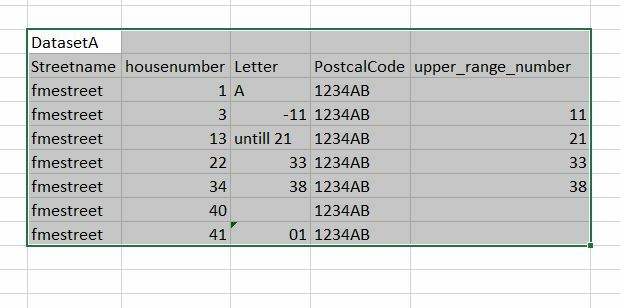I have a dataset containing a registry of addresses,(street, number, postal code etc. , and an additional field containing information where there's input like for example 24-44 , meaning all the housenumbers from 24- 44 are also included, or - 44 etc.
I need to match these addresses with another official address dataset (through the featuremerger), and I want to be able to find matches for all the numbers that are between 24 and 44.
I've managed to "mine" the text in the additional field and I've created a new attribute containing the upper range number (in this case 44 )
Now, I just need to have features that have the housenumbers that fall between the lower and upper range, and for this I obviously need a python script that can be used within the "pythoncaller" transformer and then run them through the feature merger.
I know a little bit of Python, but the little bit that I know apparently isn't enough to make the translation to Python in FME.
I know I need to define a function that's able to register this number range, and with a for loop that states that for every number within that range a feature is created with and address containing housenumbers within that number range. The function also needs to keep track of even and odd numbers. If the upper and lower range aren't both odd, or both even, it can create an adress for every number within that range. If not, than it only needs to create features with either an odd or even housenumber.
I hope my explanation was clear enough. Can someone help me along the way? Writing the whole script isn't neccesary since I also like to figure it out on my own.
















